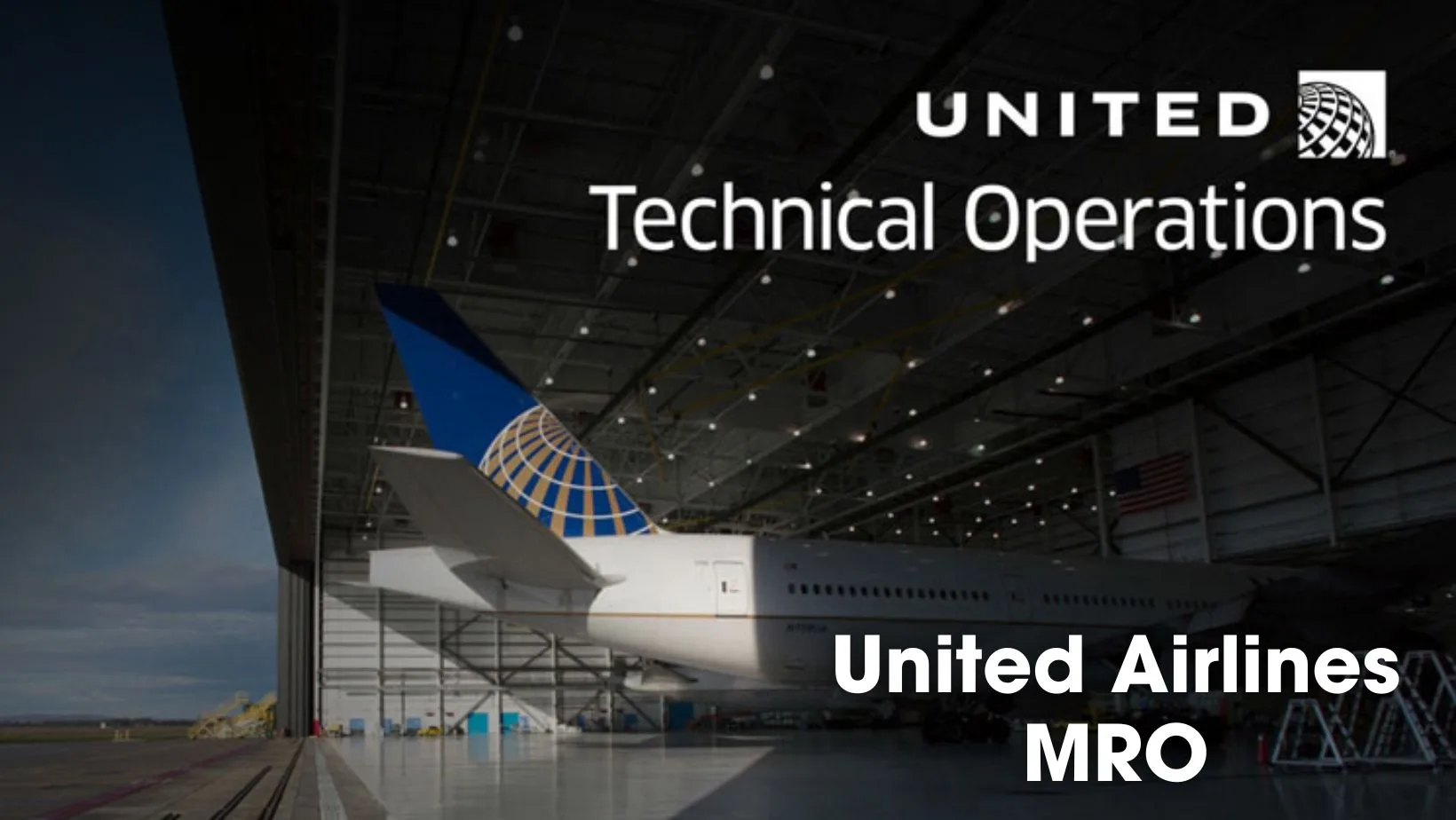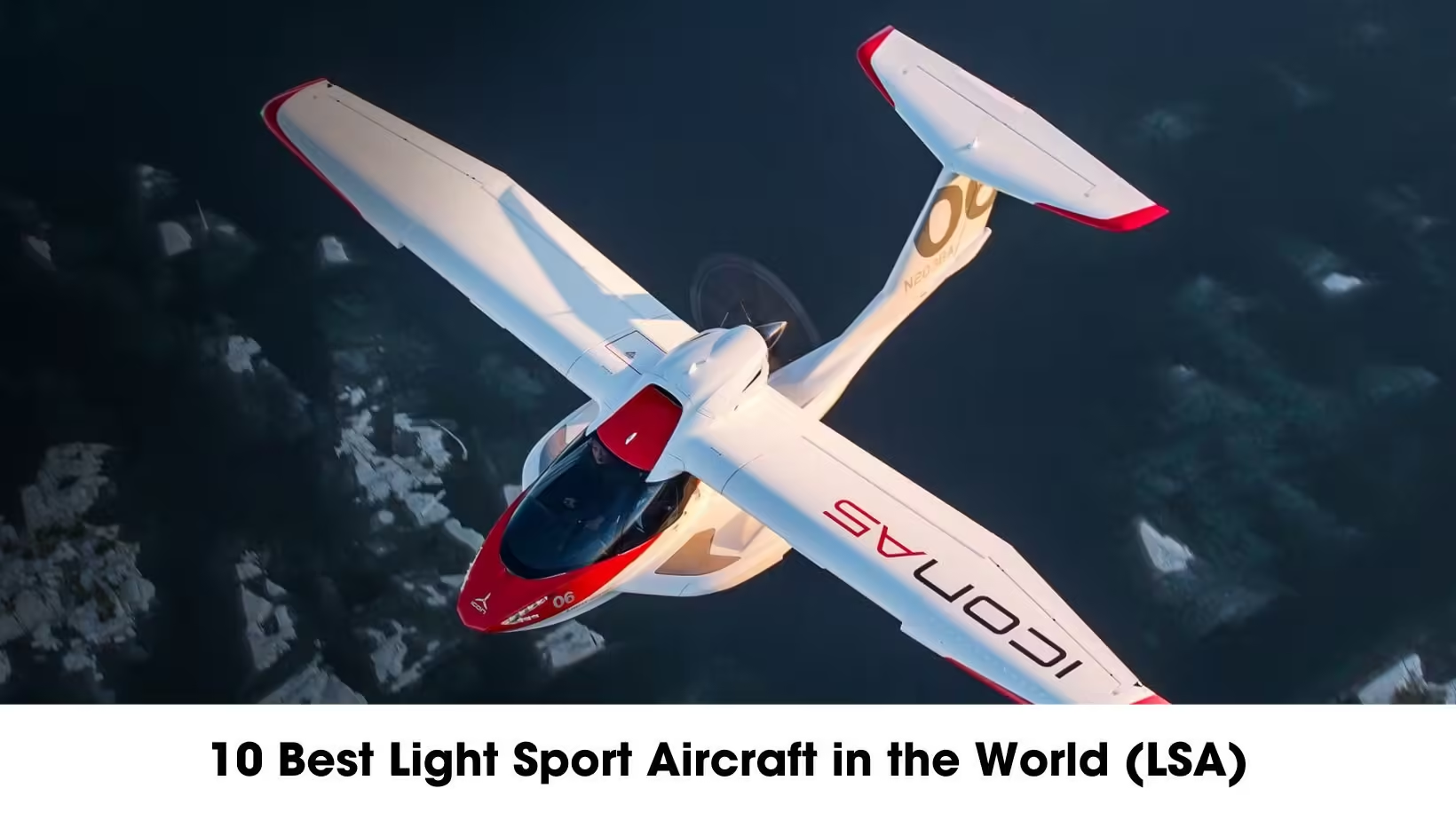Introduction
United Airlines is one of the largest airlines in the world with a fleet size of 948 aircraft. The aircraft includes models from Airbus, Boeing, and the Embraer companies. United Airlines MRO has been performing both in-house and outsourced maintenance for its fleet. It has a strong technical operations division that leverages its experience, network, and technology to ensure safe and efficient operations. In 2018, it was reported that United outsourced 33% of its maintenance, which was the lowest among the five largest carriers in the U.S. (Derber, 2019). United Airlines was the early adopter of the usage of digital tools such as iPads during line maintenance (Canaday, 2021).
United’s outsourcing strategy may vary depending on the type of maintenance, the fleet plan, and the state of the market. For example, in order to lower fixed costs, it might use flight-hour contracts for some fleet maintenance. It may also outsource more work to low-cost regions, such as Asia, to save money (Bazargan, 2016).
United Airlines MRO Division
The United Airlines has got United Technical Operations MRO division that is providing full range of services to their fleets and also to more than 40 customers worldwide. United Technical Operations has successfully served the aircraft industry for over 90 years with 14,200+ personnel and 52 line stations across the globe. Some of the capabilities and certifications of United Technical Operations are:
Fleets
- Boeing B737, B747, B757, B767, B777, B787
- Airbus A319, A320, A321, A330, A380
- Embraer E170, E1752.
Engines
- Pratt & Whitney PW2000, PW4056, PW4060, PW4077, PW4090
- CFM International CFM56-7B, CF6-80C2, LEAP
- General Electric GE90, GEnx
- Rolls-Royce RB211 International Aero Engines AG V2500
Certifications
- FAA PART 121, FAA PART 145, FAA ODA, FAA/EASA dual release, FAA 8100-9, Airbus RDAS, AS9110, AS9110, CAAS, EASA, JCAB, MOLIT, TCCA
Airline Maintenance Strategy
The Airline Maintenance strategy is an approach that any airline adopts for the safety, reliability, and efficiency for its fleet. The strategy involves decisions regarding preventive and corrective maintenance, proper allocation of resources and complying with aviation regulations. Most airlines perform their maintenance in-house as it is a viable and attractive option for them (McFadden and Worrells, 2012). According to Global MRO, in 2023, the market attained a value of nearly USD 747.61 billion.
Five major factors that define United Airlines’ strategic approach to line maintenance. These include optimizing maintenance processes, utilizing data-driven decision-making, ensuring reliability through proactive measures, fostering a culture of safety, and embracing technology advancements for efficiency gains. United Airlines aims to enhance operational performance and ensure the safety and reliability of its fleet through these initiatives.
PEST Framework
Political Factors
Political factors are related to political forces, stability, or government policies for the regulations that would impact the performance of the business. Depending on the regions it serves, United Airlines has to operate by the rules and requirements of several aviation agencies, including the FAA, EASA, and CAA. Recently, the FAA imposed a $1.1M fine on United Airlines for flying aircraft that was not in airworthy condition.
Economical Factors
United Airlines has to maintain a balance between the expenses and income related to maintaining its fleet of aircraft, as well as the competitive landscape and state of the aviation market. Economic factors affect decisions about fleet planning, asset management, and maintenance outsourcing as well as the profitability and sustainability of an airline’s operations. Economic factors also impact the labor market and maintenance worker wages, as well as the availability and demand for maintenance services, supplies, and equipment (Derber, 2021).
Social Factors
United Airlines has to meet the expectations and preferences of the customers and the stakeholders. Social factors affect the airline’s reputation and image in addition to the quality and satisfaction of the services provided. Moreover, the airlines has to look at the environmental and ethical aspects of aircraft maintenance, such as the reduction of emissions, noise, and waste, and the compliance with social responsibility and sustainability standards (Miller, 2021).
Technological Factors
Technological Factors enable the airline to develop and adopt new aircraft models, systems, and components, which may have different maintenance requirements and challenges. Furthermore, technological advancements allow for the enhancement and optimization of maintenance procedures, including condition-based maintenance, predictive maintenance, and the digitization of maintenance records and data (Derber, 2021).
United Airlines has a mixed maintenance strategy that involves both outsourcing and developing in-house repair shops.
Outsourcing: United Airlines outsources some of its maintenance tasks to external service providers, such as AAR, Lufthansa Technik, and ST Engineering. This allow United Airlines to lower its fixed costs and capital expenditures, boost flexibility and scalability, gain access to specialist knowledge and technology, and enhance efficiency and service quality.
Developing in-house repair shops: United Airlines builds and manages its own repair facilities; one such facility is a 2.9 million-square-foot maintenance complex located in San Francisco, California. This allows the airline to retain control and visibility over its maintenance activities and data, reduce its dependency and risk on external service providers, and coordinate and integrate its maintenance operations.
Levels of Maintenance in the Aviation Industry
• Line maintenance
• A Checks
• C Checks
• D ChecksLine Maintenance
Aircraft line maintenance involves carrying out necessary minor maintenance on an aircraft shortly before a scheduled flight. This includes tasks such as defect correction, troubleshooting, conducting general inspections, making small repairs etc. Unlike extensive inspections or major disassembly and rectification of the aircraft, line maintenance focuses on essential and timely checks to ensure the aircraft’s readiness for flight.
A Checks
Each aircraft undergoes overnight, roughly 10-hour-long, A-check maintenance in the hangar. An A-check is a biweekly to monthly visual inspection of the aircraft’s exterior and interior. A- check tasks include operating tests, inspection, lubrication, filter replacement, and oil checking and service (Stadnicka, 2017).
C Checks
C-checks encompass a range of tasks including minor structural inspections, cleaning and maintenance of aircraft systems, and functional and operational system checks. The frequency of C- checks varies based on factors such as aircraft type, flying cycles, flight hours, and calendar months. Typically, C-checks are conducted in a hangar every 12 to 20 months. The duration of C- checks for a single aircraft typically spans three to seven days (G. Tanner, 2008).
D checks
A major maintenance visit known as a D check is typically conducted on an aircraft every 6 to 10 years, depending on the specific aircraft. D checks involve a thorough examination and maintenance of the entire aircraft, which may include disassembling the aircraft to inspect for corrosion and damage. This process can take approximately four to six weeks and require a significant labor investment of around 30,000 to 50,000 hours (Qichen, 2022).
During D checks, airlines often seize the opportunity to completely refurbish and update the aircraft’s interior by stripping it down and removing all equipment. Due to the substantial scope and cost associated with D checks, most airlines carefully plan and schedule these inspections well in advance.
It is usually recommended to begin with line maintenance. Aircraft servicing, minor repairs, and routine inspections are all part of line maintenance, which might be done daily or in between flights. The aircraft can continue to operate safely and in an airworthy condition through line maintenance. The more thorough and time-consuming A, C, and D checks are maintenance levels that entail longer inspections and maintenance duties. All maintenance levels are combined to provide optimized maintenance solutions, with each level fulfilling a distinct function in guaranteeing the aircraft’s airworthiness, safety, and operating effectiveness. To keep the aircraft operating at its best, it is essential to adhere to approved maintenance schedules and execute comprehensive inspections at each level.
Maintenance Cost Influencing Factors
The International Civil Aviation Organization of the United Nations examined the average expenses of operating a medium-sized commercial aircraft, like a Boeing 757-200, they discovered that the cost of maintenance per hour was more than the price of fuel and crew during in-service operations. By the end of 2025, it is expected that the global market for aviation maintenance, repair, and overhaul (MRO) would have grown from $118,000 million to $154,000 million. The competition in the industry is gradually growing that result in the steadily decrease in ticket prices. Therefore, having good maintenance strategy for the reduction of cost sis critical to survive in this demanding environment.
Factors that could influence the maintenance costs of the aircraft for the airlines are
- Size and Composition of Fleet
- Age and Condition of the Aircraft
- Maintenance Strategy and Policies
- Maintenance Organization structure
Size and composition of fleet
United Airlines has one of the largest and most diverse fleets with total of 948 aircraft of which 891 are in service and 57 are parked (Spotters, 2024). This creates complexity and difficulties for personnel management, equipment availability, and spare part availability, as well as for the planning, coordinating, and carrying out of maintenance.
Age and condition of the aircraft
United Airlines’ average fleet age is around 16.2 years which is relatively old as compared to the industry average of 13.5 Years. Older aircraft trends to have higher maintenance cost but United Airlines has also made investments to modernize and enhance its fleet, placing orders for brand-new, more fuel-efficient aircraft like the Airbus A321XLR and the Boeing 737 MAX.
Maintenance strategy and police
The maintenance plan that United Airlines employs is to optimize safety, dependability, accessibility, and economic viability. Depending on the type and condition of the aircraft, the operating needs, and the regulatory compliance, United Airlines employs a variety of predictive, corrective, preventive, and reliability-centered maintenance techniques.
Maintenance organization and structure
United Airlines maintains a dynamic and complex maintenance structure and organization that includes partnerships and alliances with other airlines and service providers with in-house and outsourced maintenance Facilities. Over 12,000 maintenance personnel work at several hubs, stations, and locations across the globe.
For some maintenance requirements, like extensive inspections, engine overhauls, and component repairs, United Airlines also enters into contracts with outside vendors. As a Star Alliance member, United Airlines can exchange maintenance resources and best practices with other participating airlines.
MROs Trends
United Airlines is actively adapting to industry changes and collaborating with MRO providers to ensure efficient and reliable aircraft maintenance. Major MRO trends that impact decision-making in the Engineering and Maintenance Department are:
- Digital Twins
- Digital Initiatives
- Used Serviceable Materials
- Smarter MRO Software
Digital Twins
This technique builds a virtual image of a real asset, like an engine, and tracks its performance and condition in real time. This makes it possible to plan maintenance more precisely and proactively and to optimize operations and expenses (4 MRO Trends Every Airline Needs to Consider, 2018).
Digital Initiatives
In an effort to improve operational effectiveness and optimize MRO procedures, United Airlines has stepped up its digital initiatives (MRO Market Changes And Trends To Expect In Pandemic Recovery | Aviation Week Network, 2021).
Used Serviceable Materials
Instead of purchasing new parts from OEMs, this technique entails locating and utilizing parts and components from decommissioned or wrecked aircraft. This can save material costs and improve spare part availability, particularly for older aircraft models (Pozzi, 2022).
Smarter MRO Software
The software offers insights and suggestions for MRO operations by combining and analyzing data from multiple sources, including sensors, digital twins, ERP systems, and external databases. This can facilitate predictive and prescriptive maintenance and improve the effectiveness, quality, and compliance of MRO procedures (Smarter Maintenance, Repair, and Overhaul (MRO) | Deloitte US | Aviation and Transportation).
More than 250 AAR jobs are expected to be created in the Miami and Rockford regions as a result of United’s expanded maintenance commitment, which will be advantageous to both businesses and the aviation sector (AAR announces extension and expansion of United Airlines MRO relationship, expected facility expansion in Miami, 2023). Through 2030, United Airlines and AAR Corp. will continue to provide airframe maintenance and repair services. Under this arrangement, AAR’s Miami and Rockford facilities will increase their dedicated airframe narrow-body capacity and their heavy maintenance obligations.
United Airlines seems to have a positive and proactive approach regarding these MRO trends as United Airlines has resumed heavy maintenance and engine overhauling (Derber, 2021). The airlines have also invested in smarter MRO software to integrate and analyze data that provide better insights and are recommended for MRO operations. Furthermore, United Airlines optimizes its MRO costs and quality through fact-based outsourcing. (MRO) | Deloitte US | Aviation and Transportation).
Organization Structure
United Airlines is one of the largest airlines with a fleet size of 948 and a network of more than 300 destinations. The airline runs a dynamic, complex organization that necessitates the efficient coordination and integration of many departments, including materials management, technical services, and maintenance.
1. Maintenance Organization
Roles within the maintenance organization include aviation maintenance technicians (AMTs), planners, schedulers, engineers, and support staff.
- Maintenance Aim: Ensuring availability and performance while considering aircraft condition and available resources.
- MaintenanceLayout: Decentralized support for flexible and responsive service.
- Types of Maintenance Activity: Including line maintenance, base maintenance, heavy maintenance, and engine overhaul.
2. Material Management
United Airlines, materials management is an essential supply chain activity that helps the airline fulfill its environmental promise by cutting waste and emissions while guaranteeing material availability for operations and maintenance. Important duties include:
- Planning for Material Requirements: Using effective forecasting and planning techniques to identify material requirements and reduce expenses.
- Purchasing: The timely and cost-effective acquisition of materials to satisfy operating requirements.
- Inventory management: is the process of keeping an eye on quality, managing logistics, and optimizing inventory levels in order to reduce surplus stock.
- Materials Quality Assurance: Upholding strict safety and quality standards while making sure materials satisfy legal and operational requirements.
3. Technical Services
United Airlines Tech Ops, are in charge of technical services for the fleet’s engineering, maintenance, and quality control. In order to guarantee regulatory compliance and aircraft safety, it creates and implements technical standards, regulations, and procedures. Important duties include of:
- Engineering: creating, evaluating, and authorizing repairs, inspections, and changes for aircraft, giving vendors and maintenance staff technical support.
- Quality Assurance: Ensuring that maintenance operations conform to FAA and regulatory standards. carrying out audits and looking at occurrences and flaws.
- Reliability: Examining the operation of aircraft systems and making necessary adjustments, providing stakeholders with data on reliability.
- Technical Publications: Producing and disseminating documentation and technical manuals related to maintenance procedures.
- Technical Training: Creating materials and training programs for suppliers and maintenance staff while guaranteeing efficacy and compliance.
Financial Performance of United Airlines
According to its latest report released on January 22, United Airlines’ financial performance resulted in profit at year-end in 2023. The airline reported a net income of $1.4 billion for the full year 2023, compared to a net loss of $7.1 billion in 2022. Its revenue increased by 23% to $33.6 billion, while its operating expenses decreased by 9% to $29.9 billion. Its operating margin improved to 11%, up from – 21% in 2022. Its earnings per share (EPS) was $4.87, up from -$25.99 in 2022 (Chandrarajan, 2024).
United Airlines Revenue Steams
- Passenger Revenue: The transportation of passengers, including the selling of tickets for both domestic and international flights, is United Airlines’ main source of income. About 61%of United’s income in 2022 came from domestic passenger revenue, while approximately 23% came from international passenger revenue.
- Cargo and Other Operating Revenue: In addition, United makes money from other operating operations including cargo services. This covers the money made from shipping packages and goods as well as the money made from auxiliary services like in-flight purchases and baggage fees.
- United Express Regional Service: By entering into agreements with several regional carriers, United Airlines provides regional service under the United Express brand, which boosts the company’s overall earnings.
Differentiation and Maintenance Costs Leadership
United Airlines aims to achieve both cost leadership and differentiation in the competitive airline sector by providing a distinctive value proposition to its clientele and upholding operational efficiency and excellence.
United Airlines Differentiates is providing superior customer experience with its innovative products and services like United Polaris Business Class, United Premium Plus economy class, the MileagePlus loyalty program, the United Club Lounges, etc. The airline also achieves its cost leadership by optimizing its maintenance operations. It has a dedicated technical operations team that oversee all the varous aspects of maintenance. United Airlines also cleavages its partnership with GE Aerospace, which provides MRO services for its engines as well as other technical support (Differentiation and Cost-Leadership by Airline Companies Coursework).
Potential Maintenance Costs
United Airlines Holdings, Inc.’s financial statements show that the company spent $3.2 billion on aircraft maintenance and repairs in 2023, which was 14.5% of its total operating expenses (Annual Report, 2023). This was a slight decrease as compared to $3.3 billion, or 15.1% of operating expenses in 2022. Also, the business declared a $1.8 billion net income in 2023 as opposed to a $7.1 billion net loss in 2022. As the company recovers from the pandemic, these results show that it has improved its financial performance and decreased its maintenance costs.
The model aims to minimize the total cost of heavy maintenance programs over a planning period, subject to performing all maintenance programs on time and other constraints. The model takes into account the fixed and variable costs of in-house and outsourced maintenance, the availability and utilization of in-house and outsourced facilities, the lead times and penalties for delays, and the quality and reliability of the service providers.
This model is also applicable for all four checks which vary in their scope, frequency, duration, and cost. According to Bazargan (2016), after applying this model hypothetical airlines that have different fleet sizes and maintenance policies. The result suggested that airlines should outsource expensive and labor-intensive checks while less expensive checks have to be performed in-house. Moreover, United Airlines has implemented the Aviatar platform by Lufthansa Technik to optimize maintenance operations. This digital solution streamlines processes enhances efficiency, and improves fleet management through features like predictive maintenance and real-time data analysis, facilitating seamless coordination among maintenance teams and minimizing downtime (AVATAR Optimizes Maintenance Operations at United Airlines, 2021).
Conclusion
United Airlines maintains its position as a leading global airline through a robust technical operations division and a strategic approach to maintenance. Leveraging both in-house capabilities and outsourcing, the airline ensures safety and efficiency while balancing cost-effectiveness. United adapts to industry trends, embracing digital initiatives and smarter MRO software. Financially, the airline has shown improvement, reporting a net income of $1.4 billion in 2023. To further enhance its maintenance strategy, United can utilize mathematical models to optimize costs while meeting program requirements. Overall, United Airlines remains committed to delivering safe, reliable, and efficient operations.
Recommendations
- Continue to invest in technology and innovation to enhance maintenance quality and productivity.
- Expand and diversify the maintenance network and capabilities to support the planned fleet expansion and new aircraft types.
- Develop and retain skilled and qualified maintenance personnel and vendors through training and certification programs.
- Monitor and evaluate the performance and reliability of aircraft systems and components and implement improvement opportunities and corrective actions.
- Ensure compliance with regulatory and environmental standards and best practices.
United Airlines MRO needs to be optimize to ensure operational efficiency, safety, reliability, and customer satisfaction while minimizing costs and risks. One possible way to make better decisions regarding maintenance strategy is to use to the mathematical model that considers trade-offs between in-house and outsourced maintenance as proposed by Bazargan (Bazargan, 2016).
The optimal maintenance strategy for United Airlines required a completed comprehensive and holistic analysis of the cost and benefits of in-house and outsourced maintenance. The airline, considering the strategic and qualitative components of maintenance operations, should make sure that the strategy is in line with its goal and vision.
References
- McFadden, M., 2012, Global Outsourcing of Aircraft Maintenance. Journal of Aviation Technology and Engineering. [online] Available at: <https://docs.lib.purdue.edu/jate/vol1/iss2/4/> [Accessed 19 February. 2024].
- Stadnicka, D, 2017, July , Skills management in the optimization of aircraft maintenance processes. ScienceDirect. [online] Available at:<https://sciencedirect.com/science/article/pii/S2405896317317226> [Accessed 20 February. 2024].
- G. Tanner, A., 2008, Innovative Cooperative Actions of R&D in EUROCONTROL Programme CARE INO III: Dynamic Cost Indexing: Aircraft maintenance – marginal delay costs. Semanticscholar. [online] Available at: <https://semanticscholar.org/paper/Innovative-Cooperative-Actions-of-R%26D- in-Programme-Cook-Tanner/6c0840e10360595659f8b4a664c6ea50683dd3b3> [Accessed 20 February. 2024].
- Qichen, T., 2022, May , Robust long-term aircraft heavy maintenance check scheduling optimization under uncertainty. Sciencedirect. [online] Available at:<https://sciencedirect.com/science/article/pii/S0305054821003671> [Accessed 20 February. 2024].
- Spotters, P., 2024, February 20, United Airlines Fleet Details and History. Planespotters. [online] Available at: <https://planespotters.net/airline/United-Airlines> [Accessed 20 February. 2024].
- Satair. 2018, November . 4 MRO trends every airline needs to consider . [online] Available at:<https://blog.satair.com/four-mro-trends-to-consider> [Accessed 20 February. 2024].
- Pozzi, J., 2022, December 12, MRO Trends To Look For In 2023 | Aviation Week Network. Aviationweek. [online] Available at:<https://aviationweek.com/mro/supply-chain/mro-trends-look- 2023> [Accessed 20 February. 2024].
- deloitte. n.d. Smarter Maintenance, Repair, and Overhaul (MRO) | Deloitte US | Aviation and Transportation. [online] Available at:<https://www2.deloitte.com/us/en/pages/consumer-business/articles/smarter-mro-aviation- transportation.html> [Accessed 20 February. 2024].
- Derber, A., 2021, January 26, United Resumes Heavy Maintenance | Aviation Week Network. Aviationweek. [online] Available at: <https://aviationweek.com/mro/united-resumes-heavy- maintenance> [Accessed 20 February. 2024].
- Aviationweek. 2021, April 16. MRO Market Changes And Trends To Expect In Pandemic Recovery | Aviation Week Network. [online] Available at: <https://aviationweek.com/mro/mro-market-changes- trends-expect-pandemic-recovery> [Accessed 20 February. 2024].
References 2
- Aarcorp. 2023, July 17. AAR announces extension and expansion of United Airlines MRO relationship, expected facility expansion in Miami. [online] Available at: <https://aarcorp.com/en/newsroom/press- releases/2023/aar-announces-extension-and-expansion-of-united-airlines-mro-relationship-expected- facility-expansion-in-miami/> [Accessed 20 February. 2024].
- United Airlines. 2023, February 16. Annual Report. [online] Available at: <https://ir.united.com/static- files/c7b4cf67-0a47-4a05-bb56-76329c61c7ff> [Accessed 20 February. 2024].
- Bazargan , M., 2016, May 09, Airline maintenance strategies – in-house vs. outsourced – an optimization approach | Emerald Insight. Emerald. [online] Available at:<https://emerald.com/insight/content/doi/10.1108/JQME-08-2015-0038/full/html> [Accessed 20 February. 2024].
- Derber, A., 2019, American Airlines Continues MRO Insourcing Drive | Aviation Week Network. Aviationweek. [online] Available at: <https://aviationweek.com/mro/american-airlines-continues-mro- insourcing-drive> [Accessed 20 February. 2024].
- Canaday , H., 2021, How Airlines Are Shifting MRO Strategies | Aviation Week Network. Aviationweek. [online] Available at: <https://aviationweek.com/mro/supply-chain/how-airlines-are- shifting-mro-strategies> [Accessed 20 February. 2024].
- Miller, J., 2021, Lessons in Lean and Agility from United Airlines | Gemba Academy. gembaacademy. [online] Available at: <https://blog.gembaacademy.com/2021/10/25/lessons-in-lean-and-agility-from- united-airlines/> [Accessed 20 February. 2024].
- Chandrarajan, A., 2024, United Airlines’ Financial Performance Results In Profit At Year-End 2023 – Travel Radar. Travelradar. [online] Available at: <https://travelradar.aero/united-airlines-financial- performance-results-in-profit-at-year-end-2023/> [Accessed 20 February. 2024].
- Newsroom. 2021. AVIATAR Optimizes Maintenance Operations at United Airlines. [online] Available at: <https://newsroom.aviator.aero/aviatar-optimizes-maintenance-operations-at-united-airlines/> [Accessed 20 February. 2024].
- Studentshare. Differentiation and Cost-Leadership by Airline Companies Coursework. [online] Available at: <https://studentshare.org/management/1717496-mba-strategic-analysis-and-choice> [Accessed 20 February. 2024].







Leave a Reply